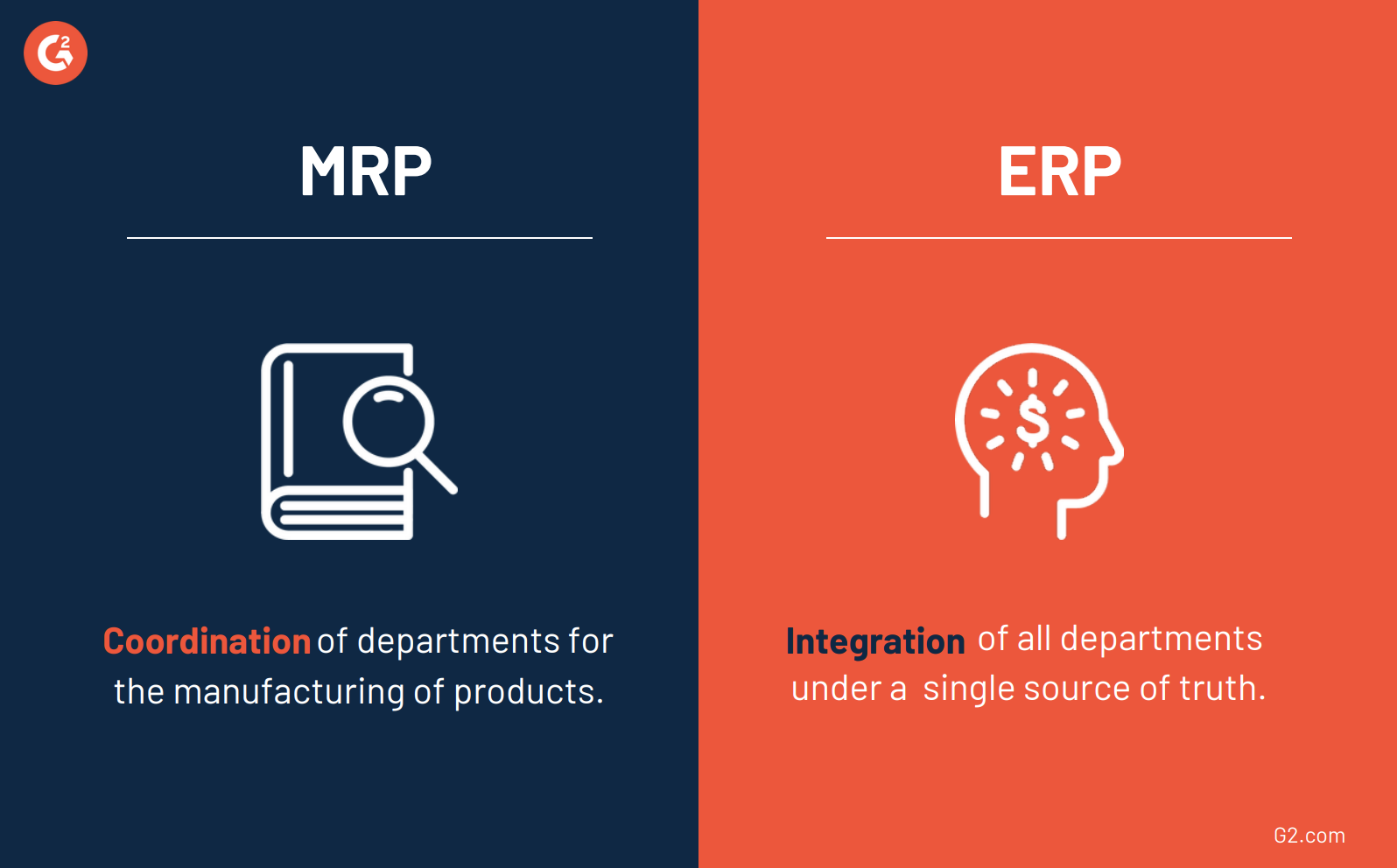With the rapid expansion of technology making communication easier than ever, new and exciting business opportunities have begun to make their way onto the scene.
The ability for information, capital, and even human talent to be transported around the globe at rates that would’ve been unimaginable mere decades ago created an environment ripe for creative ideas to flourish.
However, the huge demands of such far-flung aspirations require a similar set of intricate systems to support and coordinate this mobility.
An overview of the history of ERP
The first precursor to ERP software can be traced back to the 1960s when it was used as a tool to manage inventory and quality control in large manufacturing organizations. Since then, it has grown to encompass many industries and job roles, offering unparalleled integration of vastly different departments. This functionality is what has come to define ERP software as we know it today.
As one of the primary organizing principles of our current social world, large enterprise corporations have increasingly become reliant on ERP — Enterprise Resource Planning — systems to ensure the accuracy of the complex undertakings of these entities. Delving into the roots of these systems can tell us much about their current iterations as well as the initiatives they’re intended to support.
Exploring the history of ERP
ERP systems are expansive pieces of software with a wide variety of functions and applications available to their users. As ERP solutions are ultimately intended to help coordinate large-scale business processes, their history is generally reflective of this; they started as a way to expand the coordination of different manufacturing undertakings under one enterprise and later evolved to include more back-end professionals as well.
ERP systems—like most widely used software solutions—were first innovated in order to solve a fundamental problem of human enterprise. In this case, ensuring the validity of information across rapidly-growing businesses that would have been previously unimaginable. As the shape and structure of business has changed over the past few decades, so too has the software intended to support it evolved.
In many ways, the history of ERP systems is closely tied to the stunning development of computer hardware that characterized much of the tech space in the latter half of the 20th century. Each decade has seemingly brought its own new permutation of ERP software alongside the latest developments.
The increasing accessibility of powerful computers has also shaped the history of this software; turning it from a luxury few could afford to a necessity for enterprise manufacturers that has forged a not-insignificant presence amongst mid-market organizations.
Want to learn more about ERP Systems? Explore ERP Systems products.
Evolution of ERP systems
ERP systems date back to the 1960s; however, they’ve only become understood in their current form in the past few decades. They’ve undergone several iterations since their invention. The term ‘ERP’ wasn’t coined until 1990 and has had several variations on that classification in the intervening years.
The precursor: inventory control systems
Before the lifecycle of this particular software solution began, most product-based organizations used their own centralized computing systems that automated inventory. These ‘IC systems’ emerged in the 1960s and were usually developed internally and rarely went beyond tracking the presence or lack of final products against monthly or quarterly production quotas.
Such packages might seem simplistic by today’s standards—they lacked many of the functions of their contemporary counterparts—however, they represent the first step in using computational machines to gather and utilize data in product-based manufacturing with the explicit goal of optimizing production and distribution in a systematic way.
MRP software
Materials Requirements Planning—MRP—software emerged from a collaboration between IBM and a manufacturer of tractors and construction machinery: J.I Case. The ability to calculate the specifics of business has been a core requirement of businesses around the world over since the days of mercantilism, and modern incarnations of this were no exception.
By applying computational machines to the day-to-day operations of their business, the manufacturers at J.I. Case found they were able to meet and even surpass the markets increasing needs to achieve a greater level of coordination between manufacturing products, procuring raw materials, and the delivery of goods to and from their factories. The software achieved this by automating the scheduling of operations and procurement.
In its earliest incarnation, this software was only really used by a select few manufacturing companies. These types of businesses were a fertile ground for a system like early MRP software to develop due to the unique requirements of procuring raw materials, producing goods, and moving these products to the final sellers.
The limits of computational technology were also keenly felt by many organizations in the 1970s; the hardware needed to run a complex program like MRP software could often require entire rooms in order to access the same processing power we can access in our smartphones today.

Source: Solarwinds Pingdom
Only a select few enterprise-level organizations had the capital readily available to feed such insatiable mechanical beasts.
MRP II
The 1980s saw several advances in technology, including the invention of the CD and launch of Nintendo’s Game Boy. For production software, it saw the development of Manufacturing Resource Planning (MRP II) systems.
This iteration of pre-ERP software had an emphasis on the optimization of manufacturing processes through an integration of raw material requirements and production schedules. These systems included the functionality of old MRP systems, but began to integrate overarching coordination between the different departments responsible for the creation of the organization’s end product.
ERP
It wasn't until the 1990s that we first saw proper ERP software entering the arena. This saw the full integration of entire business across one single database in order to create agile adaptations to the demands of the market for the schedules of MRP and MRP II systems.

ERP systems are defined by how they build a database that acts as the single “source of truth” for production-based businesses. The advancement this software shows over MRP systems is in the integration of seemingly disparate departments, such as marketing, finance, and HR into one digital ecosystem.
Tip: 2 has complete profiles on dozens of ERP systems, ranked with verified user reviews to help you find the best solution for your business.
ERP II
Following the release and subsequent widespread adoption of ERP systems saw many of the software’s respective vendors developing even more functions beyond the core front-to-back integration.
These add-ons or “apps” created the idea of extended ERPs which could tackle a wide variety of different business issues such as incorporating consumer interactions into the core dataset customer relationship management through integration with customer relationship management (CRM) systems.
At this point, it might seem like ERP systems had simply grown to be far bigger than was reasonable. However, the truth is that each subsequent add-on to the base software in fact served to increase the predictive power of the program. The more sources of data an ERP system has at its disposal—through external programs such as a CRM—the better users are able to react to changes in demand or new trends in their industry.
This is what characterized ERP II: an integration with other efficient business software solutions that allows the otherwise slow and ponderous machinery of large businesses to instead strike like lightning when an otherwise unattainable opportunity presents itself.
ERP and the cloud
This most recent iteration of ERP software has seen many organizations adopting ERP as an application or series of applications that are delivered remotely over the internet in the software as a service (SaaS) model.
This cutting edge method of ERP deployment is possible due to the staggering advances made in the internet where entire software packages can be delivered and operated remotely without the need for the end user to invest in the hardware or infrastructure necessary to run massive systems like ERP on-site.
This has vastly lowered the barrier to entry for many businesses and has been increasingly responsible for the proliferation of ERP software amongst mid-market organizations.
The history of ERP companies
This history of ERP was not only influenced by the surrounding technological trends. The companies that developed these software solutions also played a large role in adding their own personal and historical elements to the development of ERP systems.
While the rise of the SaaS model has opened the market to dozens of new ERP vendors, the four oldest listed here have by far wielded the most influence on the trajectory of this burgeoning industry.
SAP
Started by a team of former IBM engineers in Germany, Systems, Applications and Products in Data Processing (SAP for short) was founded in 1972 to provide business software for enterprise-level manufacturers. They released their first ERP system, R/2, in 1992. However, it wasn’t until the release of the next iteration of this software, R/3, that they exploded in their overall market share and quickly rose to prominence as one of the top vendors in the industry, with over 17,000 customers by 1999.
JD Edwards & Co
JD Edwards was founded in 1977 in Denver, Colorado, as a supplier for software for the IBM System i; an early mini-computer used by many businesses before the turn of the century. They launched their ERP system, OneWorld, as a flexible alternative to larger products with a reach into many mid-market organizations. It was acquired by Oracle in 2003 for $1.8 billion.
The BAAN Company
A Netherlandish company founded in 1978, BAAN entered the ERP market with the belief that the internet is the “ultimate enabler”, and it's easy to see that philosophy in the approach to their particular software solution. They are known for their unparalleled cross-functionality amongst a variety of different business aspects and have access to a special tool, Orgware, that helps with implementation costs and has led it to become a leader in the defense and aerospace industries.
Oracle
The current industry leader, Oracle is a titan in the ERP space, and for good reason. It’s the second largest software company in the world after Microsoft, and has been in the ERP space since 1987. Their ERP system, Oracle Applications, has one of the most extensive stables of applications and their database management software has served as the basis for other ERP systems, making them both a partner and competitor to these companies.
iERP: The future of ERP systems
With all the new developments happening every year in the tech space, it can be hard to sift through the noise and tell what will stick to a particular industry. For ERP, it seems that the integration of machine learning and artificial intelligence could lead to promising new avenues for users of the software.
These intelligent ERP systems (iERP) can theoretically make use of advanced data analytics in order to lend incredible predictive power to large business operations at a global scare.
The spread of IoT devices has also had an impact on recent ERP businesses. By connecting production and distribution devices directly to the central database provided by ERP systems, iERP could achieve unparalleled integration and agility by automatically sending commands to warehousing, procurement, and manufacturing units based on the data received from other integrated software such as CRM.
Hogwarts, a history
ERP can seem so complex as to be practically magical. The past can tell us much about the present and future of a particular industry. ERP software developed from the need to coordinate, predict, and react to ever-changing market trends and forces, and this history has a strong hand in determining the next evolution of these dynamic and expansive systems.
Ensuring data integrity is imperative for any enterprise business. Ensure you have the highest quality data available when you implement a new ERP system.

Piper Thomson
Piper is a former content associate at G2. Originally from Cincinnati, Ohio, they graduated from Kenyon College with a degree in Sociology. Their interests include podcasts, rock climbing, and understanding how people form systems of knowledge in the digital age. (they/them/theirs)
